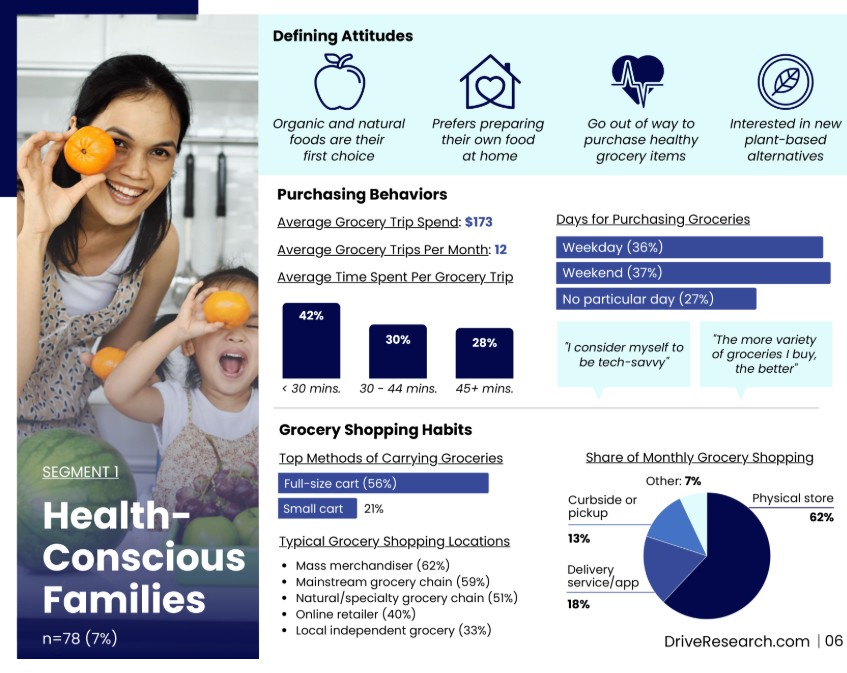
As we all know, a brand is nothing without a solid understanding of its target audience!
For businesses to see increased sales and continued growth, it’s important they know who they’re actually selling to.
Believe it or not, 42% of marketers don’t have a grasp on who their audience is. This is risky, as catering to the wrong market = wasted money and time. Who wants that?
Hereinlies the importance of audience research…
What is Audience Research?
Audience research refers to the process of gathering important data about a brand’s existing/potential customer base.
This information is used to provide more information about a brand’s target audience or who its ideal consumer is. This varies on the needs and goals of the company, of course.
Understanding target audiences can improve the following factors:
- Products/services
- Marketing campaigns/strategies
- Customer retention and acquisition
What to Research About Your Audience
When brands have a better understanding of who their base is, that means they can better connect with their consumers. In turn, this usually attracts more consumers to their brand.
Key aspects to look for in audiences:
- Preferences
- Common behaviors
- Needs
These aren’t the only details to keep an eye out for. Let’s cover additional insights to consider when researching an audience.
Understanding Demographics
Demographics are an integral part of all market research. This is especially true for companies looking to understand their audience.
Common demographics include:
- Age
- Gender
- Income
- Education
- Occupation/s
- Location
Demographic information allows brands to relate better to their customers and provides useful data for new marketing strategies.
Evaluating Purchase Behavior
What do customers like about your brand? What makes them take the plunge to purchase an item/service?
Audience research tools answer questions like these.
The data in the research will allow brands to see how their actions directly influence the intent of their customers.
This research also reveals key information about product features and pricing, two major factors that play into purchasing decisions. By gaining this knowledge, brands can expect to see an increase in brand loyalty.
To back up our point, up to 62% of consumers are loyal to a brand because of good pricing strategies.
This is one of many details audience research can provide.
Gathering Feedback and Opinions
You’re probably wondering how to obtain this useful data.
There are a few different ways to go about this. The main option is online surveys but there are other ways to gather this information such as focus groups and in-depth interviews.
These tools will easily obtain unique data about consumer preferences and other important details.
Tracking Trends and Preferences
Consumer trends and preferences are always changing.
For instance, with so much shopping now being done online, tracking these changes is more essential than ever.
While this is expected, it can make business tricky if you don’t know how to measure these trends. Thankfully, conducting audience research is a great way to stay on top of these fluctuations (and not fall behind).
Assessing Competitor Audience
Measuring your audience also aids in competitor research.
Gathering data on rival companies is ideal for brands who really want to get ahead. For example, the data obtained about other companies in your industry can be used to promote your own goals.
Where are your competitors lacking? Is there a specific customer need they’re not meeting?
You can take this information to strengthen your own resources and become a challenging rival.
Types of Audience Research
Since measuring your audience has so many benefits, there are just as many ways to conduct it.
The type of research you choose to pursue depends on the needs of your company, budget, and type of industry. We suggest partnering with a third-party firm like Drive Research to get the best data and recommendations.
Segmentation Research
Segmenting research takes a larger market and divides (AKA, segments) it. The purpose here is to create more manageable groups with common characteristics, like…
- Demographics
- Psychographics
- Behaviors/needs
By creating groups based on these details, it’s easier to create marketing and outreach strategies.
Here is an example of a customer profile we created when conducting audience research on different grocery shopper segments.

Customer Profiling
This type of audience research creates a detailed profile of your average customer.
Customer profiling will gather characteristics based on demographics and related groups, giving brands an idea of who they should target. To create a proper marketing strategy, you need to have an idea of who you’re actually speaking to.
Profiling helps give you details about your individual customers, resulting in a more targeted approach.
Product Testing and Concept Testing
Measuring the appeal of a product is essential for brands if they want to see increased sales.
After all, how many times have products launched only to flop? Way too many.
This type of market research prevents that from happening. Product testing gathers feedback from those in your target audience to see how well a new product/service functions.
You can use the data from this research to improve the product/service before it launches. That said, it’s also possible to conduct this research on existing products.
Brand Awareness and Perception Studies
Brand awareness research measures how an audience views a brand.
Conducted through surveys, brand awareness projects gather information on…
- Perception
- Associations
- Sentiment
This information is then used to improve a brand’s overall messaging.
Customer Satisfaction and Feedback Surveys
Gathering customer satisfaction data is a critical component of the audience research process.
After all, an unhappy audience certainly won’t help business.
Customer satisfaction research will determine common pain points, allowing you to make the necessary changes. But don’t worry, it’s not all bad–you’ll be able to see where your brand is succeeding so you can continue those factors.
Competitive Analysis
Remember when we were talking about competitive analysis earlier? Well, it’s so important that we had to bring it up again!
Measuring the success of your rivals is key to any successful business–you know, the whole “keep your friends close and your enemies closer” thing.
But it’s especially true for business–by investing in this type of audience research, you’ll be able to see where your rivals are excelling and even more importantly–where they’re falling short.
Check out our video on the benefits of competitor research.
Conjoint Analysis
This tool is a quantitative approach to understanding the attributes of a product/service and how that affects customer decisions.
Conjoint analysis will help you see how these attributes can help or hinder your brand, leaving you with plenty of useful data. This data can be implemented in how you market these specific products.
User Experience (UX) Research
Measuring user experience (UX) is becoming increasingly popular as new forms of online branding emerge.
UX surveys gather important audience feedback on topics like:
- Website navigation
- Overall website design
- Checkout processes
If any of these actions are clunky or tedious to complete, you’ll find that out by running UX surveys. From there, you can make improvements based on the data.
How to Conduct Audience Research
To effectively research your audience, there needs to be a structured plan in place. Without this, things can get messy fast.
Below, you’ll find a brief guide on how to do this.
If you’re interested in outsourcing your audience research, contact our team today.
Step 1. Define Your Objectives and Goals
Clearly outline what you want to achieve through audience research.
Determine the specific insights you need to inform your marketing strategies or product development.
Market research is always done best when you have a plan prior to jumping into the research. It’s helpful to have a list of key objectives and goals you want to establish.
It’s easy to become overwhelmed by the process, so outlining your goals beforehand is a simple way to ensure you stay on-task.
Step 2. Identify Your Target Audience
Audience research is no good without an…you guessed it, audience!
But what’s key here is that you nail down the right audience. Conducting research with the incorrect customer base won’t get you anywhere.
Consider factors like:
- Demographics (age, gender and location)
- Psychographics (lifestyle, interests and values)
- Behaviors (buying habits, online usage)
Step 3. Choose Your Methodology and Conduct Fieldwork
Use Secondary Data
Take some time to look into relevant publications, industry reports and market research studies to see what exists before generating your own data.
Conduct Surveys and Questionnaires
One option is to conduct online surveys to gather detailed information on your base. This audience research method is common and simple to run. If you choose to not partner with an outsourced firm, you can use tools like Google Forms, SurveyMonkey, and other similar platforms.
Organize Focus Groups
Focus groups are sessions with people that represent your target audience. This form of audience research is intimate, with small groups consisting of no more than 10 people.
Through discussion points, you’ll gather detailed feedback and customer opinions.
Utilize Online Analytics
Resources like Google Analytics, social media insights, and related tools are a great way to understand your audience better. By looking into these trends, you’ll see how customers interact with your brand.
Interview Key Stakeholders
Chatting with sales teams, customer service representatives and related professionals will add to your customer knowledge. This is a unique way to gather data around how you can improve your audience outreach.
Analyze Competitor Audiences
And lastly, spend time studying your competitor’s customer base. Try to find similarities and differences between their audience and yours, as this can help develop your strategies.
Step 4. Analyze, Act, Repeat
Once you’ve collected your data, it’s time to organize and analyze. During this time, keep an eye out for common themes and correlations within the feedback.
Conducting this type of research isn’t a one-and-done deal. Continuously monitor your audience to be aware of relevant changes so your brand can adapt as needed.
Recommended Reading: Choosing a Methodology: Explore or Measure?
Example of Audience Research
Storytime! Kind of. Below, we’ll run through an example of what it’s like to conduct research on your audience.
XYZ Electronics is excited to launch its line of shiny new smartphones. But they want to ensure customers will buy these high-quality gadgets. To be safe, they conduct audience research.
The company wants to learn who their ideal customer is, and why they would purchase this smartphone in the first place. What’s more, XYZ Electronics wants to know how this perfect customer makes purchasing decisions.
XYZ Electronics is able to make a number of adjustments based on this feedback. They review the product’s specs and marketing/pricing strategies to match up with the audience feedback.
And everyone lived happily ever after!
Contact Our Audience Research Company
Trust us, it’s worth it to spend time researching your target audience. By making time for this, you’ll be able to better cater to the foundation of your brand–your customers.
Drive Research is full-service market research company. Our team of pros specializes in audience research and development, providing you with essential data to help you cater to your base.
If you want to learn more about our market research services, reach out to us today.



